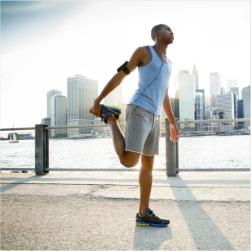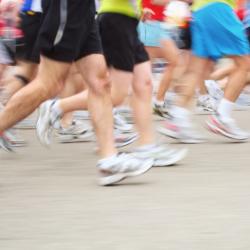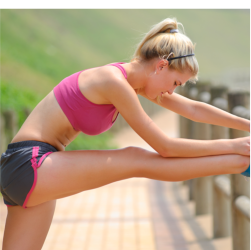There are lots of myths and misconceptions about running and muscle building, and doing research online to find the answers you’re looking for can be very frustrating.
Does Running Build Muscle?
Well, the answer can be difficult because too many self-declared experts have conflicting information. What may be true for one person may not be true for the next.
So let’s tackle the more common questions and give definitive answers for each one, so we can settle the matter once and for all.
Does running build muscle? The answer is: it depends on what you mean by “build muscle”. When you run, you use muscles, and those muscles in turn, grow or develop.
Now this development doesn’t mean that your leg muscles will bulk up. What it does mean is that your leg muscles will become stronger, they will look toned, and they will have more endurance.
What muscles are developed by running? When you run, you “push off” from the ground. This extends your ankle and works the gastrocnemius and soleus muscles of your calf. These are the muscles connected to your heel bone through the Achilles tendon.
When your foot returns to the ground, you pull up your toes. This works the tibialis anterior, the muscles on the front of your shin.
Does running reduce muscle mass? Running can help you slim down, but it does not reduce muscle mass. It doesn’t burn muscle or use it as fuel.
The only way this is possible is if you’re foolish enough to enter a diet that virtually doesn’t give you any protein at all, while at the same time you perform high intensity workouts for prolonged periods. Now that will really reduce your muscle mass.
But running does tend to prevent any extra muscle gains. This is why a lot of bodybuilding experts counsel against frequent jogging.
How do we explain all those photos of super-skinny runners? The stereotype for long distance runners is rather unfortunate, because we often see stick-thin elite runners in movies, magazines and websites. This has led some “experts” to conclude that running can really make you skinny and reduce all your muscles.
But running did not turn these elite runners into skinny beings. They’re just naturally that way, and genetics is the main reason for it. Crediting running for their slim physique is like thinking that basketball training can make you taller.
And if you see sprinters, you will notice that most of the best ones are truly fit, with muscles that are quite impressive. Check out the female sprinters, and their muscles are truly works of art.
So what does it all mean? Does running build muscle? Well, let’s put it this way: you’re better off lifting weights if you want to build muscle.
Basically, what you need to do is to define your fitness goals. If your first priority is to build muscles, then you have to cut back on your running. The more you run, the more difficult it will be for you to build muscle mass. And you also have to admit that genetics and diet can play a very significant role here. For some people who run, bulking up is possible. For others, it’s not.
If building muscle is your goal, see “Building Muscle for Men and Women” for some great tips to get you going in the right direction.




